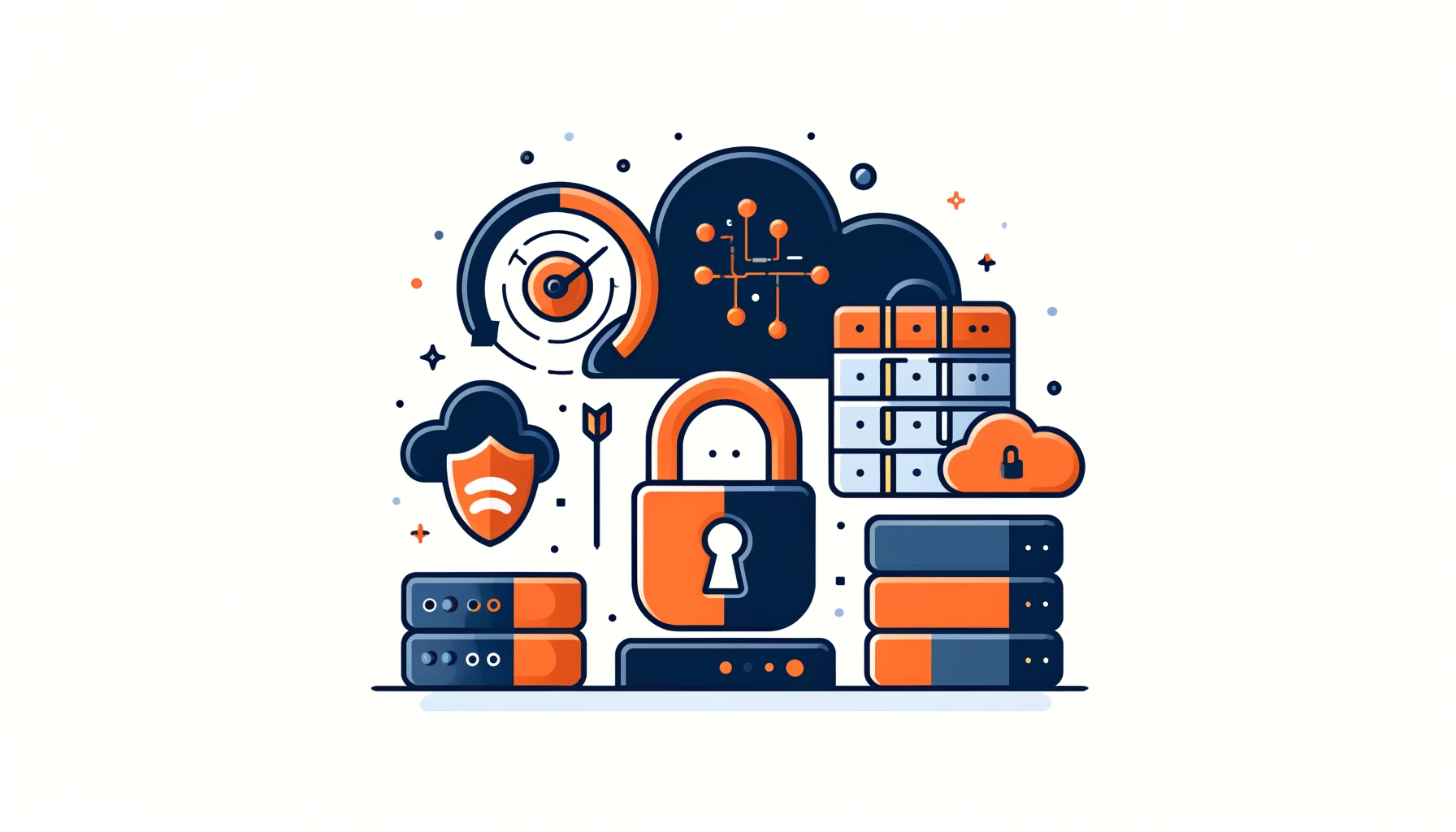
Redshift Security

Organizations today are increasingly using cloud-based data warehouses like Amazon Redshift. These platforms help store and analyze important data. However, with the convenience and scalability of cloud storage comes the critical responsibility of ensuring data security.
This article will explain Redshift Security basics. It will also demonstrate how to safeguard your sensitive information in the cloud.
What is Redshift Security?
Redshift Security encompasses a range of features and best practices designed to protect your data stored in Amazon Redshift. It involves implementing access controls, encrypting data, monitoring user activities, and adhering to compliance requirements. By properly configuring and managing Redshift Security, you can minimize the risk of unauthorized access, data breaches, and ensure the confidentiality and integrity of your data warehouse.
Key Components of Redshift Security
Access Control
Redshift provides granular access control mechanisms to manage user permissions. You can create user accounts, assign roles, and grant specific privileges to each user based on their requirements. This ensures that users only have access to the data they need, following the principle of least privilege. Example: To create a new user and grant them read-only access to a specific table, you can use the following SQL commands in the Redshift command-line client:
CREATE USER analyst PASSWORD 'strong_password'; GRANT SELECT ON table_name TO analyst;
You can execute SQL queries using the Redshift command-line client. Here’s an example of how to connect to a Redshift cluster and run a simple SQL query:
# Connect to the Redshift cluster psql -h your-cluster-endpoint -U username -d database-name # Execute a SQL query database-name=> SELECT * FROM your_table LIMIT 10;
Make sure to replace ‘your-cluster-endpoint’, ‘username’, ‘database-name’, and ‘your_table’ with the appropriate values for your Redshift cluster.
Data Encryption
Redshift offers built-in encryption features to protect your data at rest and in transit. By default, Redshift encrypts all data stored in the cluster using AES-256 encryption. You can also enable SSL/TLS encryption for data in transit to ensure secure communication between clients and the Redshift cluster. Example: To enable SSL encryption for a Redshift cluster using the AWS Management Console:
- Open the Amazon Redshift console and select your cluster.
- Choose “Modify” and scroll down to the “Database Configurations” section.
- Enable the “Use SSL” option and save the changes.
Redshift allows you to encrypt specific columns in a table using SQL. You can use the ENCODE keyword to specify the encryption algorithm:
-- Create a table with an encrypted column CREATE TABLE your_table ( id INT, sensitive_data VARCHAR(100) ENCODE AES256 );
This ensures that the data stored in the sensitive_data column is encrypted using the AES-256 algorithm. Note that encryption of the existing cluster may result in its unavailability for the migration time.
Auditing and Monitoring
Redshift provides comprehensive auditing and monitoring capabilities to track user activities and detect suspicious behavior. You can enable audit logging to capture information about user logins, queries executed, and changes made to the database. Additionally, you can integrate Redshift with AWS CloudTrail to monitor API calls and other events related to your cluster. Example: To enable audit logging for a Redshift cluster using the AWS Management Console:
- Open the Amazon Redshift console and select your cluster.
- Choose “Modify” and scroll down to the “Database Configurations” section.
- Enable the “Audit logging” option and specify an S3 bucket to store the audit logs.
You can also enable audit logging using SQL in the Redshift command-line client:
-- Enable audit logging SET parameter_name 'enable_user_activity_logging' TO true;
This will start logging user activities in Redshift, which you can later analyze for monitoring and auditing purposes.
Two-Factor Authentication (2FA)
Redshift supports two-factor authentication (2FA) to add an extra layer of security to user access. You can enable 2FA for a user using the command-line client:
-- Enable 2FA for a user
ALTER USER username ENABLE MFA;
-- Generate a shared secret for the user
SELECT GENERATE_MFA_SECRET('username');To set up 2FA, the user needs to turn it on and create a shared secret. After that, they must set up their authenticator app, such as Google Authenticator, with the shared secret. When logging in to Redshift, they will receive a prompt for a one-time password (OTP) in addition to their regular password.
Compliance and Regulations
Redshift, a powerful data warehouse solution, which helps organizations meet various compliance requirements. To ensure that your data warehouse complies with industry regulations, it is important to implement robust security controls. This involves using encryption to safeguard data at rest and in transit. It also means managing access to sensitive information and monitoring data access and changes.
By implementing these security controls, organizations can ensure that their data warehouse is secure and compliant with regulations. By protecting sensitive data from unauthorized access and breaches, businesses can not only safeguard information but also establish trust with customers. They rely on the organization to safeguard their information.
Overall, Redshift provides the tools and features necessary to help organizations maintain compliance with industry regulations and protect their data from security threats. By prioritizing security and compliance, organizations can mitigate risks and ensure the integrity and confidentiality of their data.
Implementing Redshift Security with Python
In addition to the command-line client, you can also manage Redshift Security programmatically using the AWS SDK for Python (Boto3). Here’s an example of how to create a new user and grant them access to a specific table using Python:
import boto3
redshift = boto3.client('redshift')
# Create a new user
redshift.create_user(
ClusterIdentifier='your-cluster-identifier',
DbUser='analyst',
DbPassword='strong_password'
)
# Grant SELECT privilege on a specific table
redshift.execute_statement(
ClusterIdentifier='your-cluster-identifier',
Database='your-database-name',
Sql='GRANT SELECT ON table_name TO analyst'
)Before running this code, make sure you have the necessary AWS credentials and permissions to interact with your Redshift cluster.
Best Practices for Redshift Security
- Use strong and unique passwords for user accounts.
- Regularly rotate and update user credentials.
- Implement multi-factor authentication (MFA) for additional security.
- Limit access to Redshift clusters using VPC security groups and network access controls.
- Regularly monitor and review audit logs for suspicious activities.
- Keep your Redshift cluster and associated tools up to date with the latest security patches.
Conclusion
To lower the risk of data breaches and unauthorized access, you can use access controls. You can also encrypt data and monitor user activities. Additionally, following compliance requirements is important.
DataSunrise: Exceptional Redshift Security Solutions
For organizations looking for comprehensive and flexible tools to enhance their Redshift Security, DataSunrise offers exceptional solutions. DataSunrise provides advanced security features, customizable audit rules, data masking capabilities, and compliance management specifically tailored for Amazon Redshift.
If you want to improve your Redshift Security with DataSunrise, we recommend scheduling an online demo with our team. Our team is knowledgeable and can provide you with valuable information during the demo.
You can learn more about how DataSunrise can enhance your Redshift Security by participating in the online demo. Contact us to schedule a demo and get started on improving your Redshift Security. Our specialists will demonstrate how to use DataSunrise’s powerful features. They will also show you how to integrate it seamlessly into your Redshift environment.
